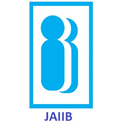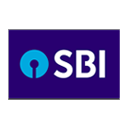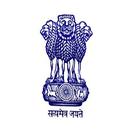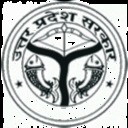CAIIB Syllabus
CAIIB Exam is conducted by the Indian Institute of Banking & Finance twice a year. CAIIB is generally held in June & December, i.e. after every six months. This exam boosts the career of bankers in terms of growth, opportunities, and salary. CAIIB certification provides advanced knowledge in better decision-making in Treasury management, Risk management, Balance sheet management, Credit Management, International Banking, Economic Analysis, etc. CAIIB consists of two compulsory papers and one optional paper. CAIIB Syllabus is very elaborate. We are giving you a module-wise distribution of every paper according to the IIFB-approved syllabus.
Attempt the CAIIB Mock Test for Free
CAIIB Syllabus 2023
Aspiring candidates must be fully aware of the syllabus and exam pattern to create an effective preparation strategy. Syllabus is a very crucial factor for the preparation of any examination. We have provided below the detailed syllabus and exam pattern for the CAIIB 2023 for all the candidates.
CAIIB Exam Pattern 2023
| Paper | Type | Number Of Questions | Marks | Time Duration |
|---|
| Advanced Bank Management | Compulsory | 100 | 100 | 2 Hours |
| Bank Financial Management | Compulsory | 100 | 100 | 2 Hours |
| Advanced Business and Financial Management | Compulsory | 100 | 100 | 2 Hours |
| Banking Regulations and Financial Laws | Compulsory | 100 | 100 | 2 Hours |
| Elective Paper | To Be Chosen From 5 Optional Subjects | 100 | 100 | 2 Hours |
The CAIIB Syllabus is designed so that it informs the candidate on better decision-making on financial, risk, and general bank management. The syllabus is very extensive, and each paper is divided into several modules. The Candidate can also download the CAIIB Syllabus pdf from the official website of IIBF (Indian Institute of Banking & Finance). The detailed (module-wise) CAIIB Syllabus is mentioned below. Please check.
CAIIB Syllabus – Compulsory Papers
CAIIB Syllabus For Compulsory Paper 1- Advanced Bank Management
| Module | Name | Topics |
|---|
| Module A | Statistics | Definition of Statistics, Importance & Limitations & Data Collection, Classification & Tabulation
Sampling Techniques
Measures of Central Tendency& Dispersion, Skewness, Kurtosis
Correlation and Regression
Time Series
Theory of Probability
Estimation
Linear Programming
Simulation |
| Module B | Human Resource Management | Fundamentals of HumanResource Management
Development of Human Resources Organisations
Employees' Feedback and Reward System
Performance Management
Conflict Management and Negotiation
HRM and Information Technology |
| Module C | Credit Management | Overview of Credit Management
Analysis of Financial Statements
Working Capital Finance
Term Loans
Credit Delivery and Straight Through Processing
Credit Control and Monitoring
Risk Management and Credit Rating
Restructuring/Rehabilitation and Recovery
Resolution of stressed assets under the Insolvency and Bankruptcy Code 2016 |
| Module D | Compliance in Banks & Corporate Governance | Compliance Function in Banks
Compliance Audit
Compliance Governance Structure
Framework for Identification of Compliance Issues and Compliance Risks
Compliance Culture and GRC Framework
Compliance Function and Role of Chief Compliance Officer in NBFCs
Fraud and Vigilance in Banks |
Attempt the CAIIB Mock Test for Free
CAIIB Syllabus For Compulsory Paper 2- Bank Financial Management
| Module | Name | Details |
|---|
| Module A | International Banking | Exchange Rates and Forex Business
Liberalized Remittance Scheme (LRS) and other Remittance Facilities for Residents
Correspondent Banking and NRI Accounts
Documentary Letters of Credit
Facilities for Exporters and Importers
External Commercial Borrowings and Foreign Investments in India
Risks in ForeignTrade – Role of ECGC
Role of EXIM Bank, ReserveBank of India, Exchange Control in India – FEMA, FEDAI, and Others
International Financial Service Centres(IFSC), GIFTCity
Technology in International Banking |
| Module B | Risk Management | Risk and Basic Risk Management Framework
Risks in Banking Business
Risk Regulations in Banking Industry
Market Risk
Credit Risk
Operational Risk and Integrated Risk Management
Liquidity Risk Management
Basel III Framework on Liquidity Standards |
| Module C | Treasury Management | Introduction to Treasury Management
Treasury Products
International Equity and Debt Products
Funding and Regulatory Aspects
Treasury Risk Management
Derivative Products
Treasury and Asset-Liability Management |
| Module D | Balance Sheet Management | Components of Assets and Liabilities in Bank's Balance Sheet and their Management
Banking Regulation and Capital
Capital Adequacy – Basel Norms
Asset Classification and Provisioning Norms
Liquidity Management
Interest Rate Risk Management
RAROC and Profit Planning |
CAIIB Syllabus For Compulsory Paper 3- Advanced Business & Financial Management
| Module | Name | Details |
|---|
| Module A | The Management Process | Basics of Management
Planning
Organizing
Staffing
Directing
Controlling |
| Module B | Advanced Concepts of Financial Management | Sources of Finance and Financial Strategies
Financial and Operating Leverages
Capital Investment Decisions
Capital Budgeting for International Project Investment Decisions
Adjustment of Risk and Uncertainty in Capital Budgeting Decision
Decision Making |
| Module C | Treasury Management | Corporate Valuations
Discounted Cash Flow Valuation
Other Non-DCF valuation models
Special cases of valuation
Mergers, Acquisitions, and Restructuring
Deal structuring and financial strategies |
| Module D | Emerging Business Solutions | Hybrid Finance
Start-up Finance
Private Equity and Venture Capital
Artificial Intelligence
Business Analytics as Management Tool
Green and Sustainable Financing
Special Purpose Acquisition Company |
Attempt the CAIIB Mock Test for Free
CAIIB Syllabus For Compulsory Paper 4- Banking Regulations and Business Laws
| Module | Name | Details |
|---|
| Module A | Regulations and Compliance | Legal Framework of Regulation of Banks
Control over the Organisation of Banks
Regulation of Banking Business
Returns, Inspection, Winding Up, Mergers& Acquisitions
Non-Banking financial companies (NBFCs) |
| Module B | Important Acts/Laws and & Legal Aspects of Banking Operations - Part A | The Prevention of Money Laundering Act, 2002
Negotiable Instruments Act, 1881
Foreign Exchange Management Act, 1999
Payment & Settlement Systems Act, 2007
Law Relating to Securities and Modes of Charge – I
Law Relating to Securities and Modes of Charge – II
Creation/Registration and Satisfaction of Charges |
| Module C | Important Acts/Laws and & Legal Aspects of Banking Operations - Part B | Reserve Bank – Integrated Ombudsman Scheme, 2021
The Micro, Small, and Medium Enterprises Development Act, 2006
Introduction to Securitisation and Reconstruction of Financial Assets and Enforcement of Security
Interest Act, 2002 ( SARFAESI Act, 2002)
Definitions Under SARFAESI Act, 2002
Regulation of Securitisation and Reconstruction of Financial Assets of Banks and Financial Institutions
Enforcement of Security Interest
Central Registry
Offenses and Penalties
Miscellaneous Provisions
Registration of SecurityInterest by SecuredCreditors and Other Creditors/ Rectification by Central Government in Some Cases
The Recovery of Debts and Bankruptcy Act, 1993
Establishment of Tribunal and Appellate Tribunal
Jurisdiction, Powers & Authority of Tribunals
Procedure of Tribunals
Recovery of Debts Determined by Tribunal and Miscellaneous Provisions
Introduction to the Insolvency and Bankruptcy Code, 2016
The Bankers' Books Evidence Act, 1891
The Legal Services Authorities Act, 1987: Lok Adalats
The Consumer Protection Act, 2019
The Law of Limitation
Tax Laws |
| Module D | Commercial and Other Laws with Reference to Banking Operations | Meaning and essentials of a contract
Contracts of Indemnity
Contracts of Guarantee
Contract of Bailment
Contract of Pledge
Contract of Agency
Meaning and Essentials of a Contract of Sale
Conditions and Warranties
Unpaid Seller
Definition, Meaning and Nature of a Partnership
Relations of Partners to One Another
Relations of Partners to Third Parties
Minor Admitted to the Benefit of a Partnership
Dissolution of a Firm
Effect of Non-Registration
Definition and Features of a Company
Types of Companies
Memorandum of Association and Articles of Association
Doctrines of Ultra Vires/ Constructive Notice/ Indoor Management
Membership of Company
Prospectus
Directors
Limited Liability Partnership Act, 2008
Transfer of Property Act, 1882
The Right to Information Act, 2005
Right to Information and Obligations of Public Authorities
Information Technology Act, 2000
Prevention of Corruption Act, 1988 |
 Discuss Forum
Discuss Forum Mock Tests
Mock Tests Category
Category









































